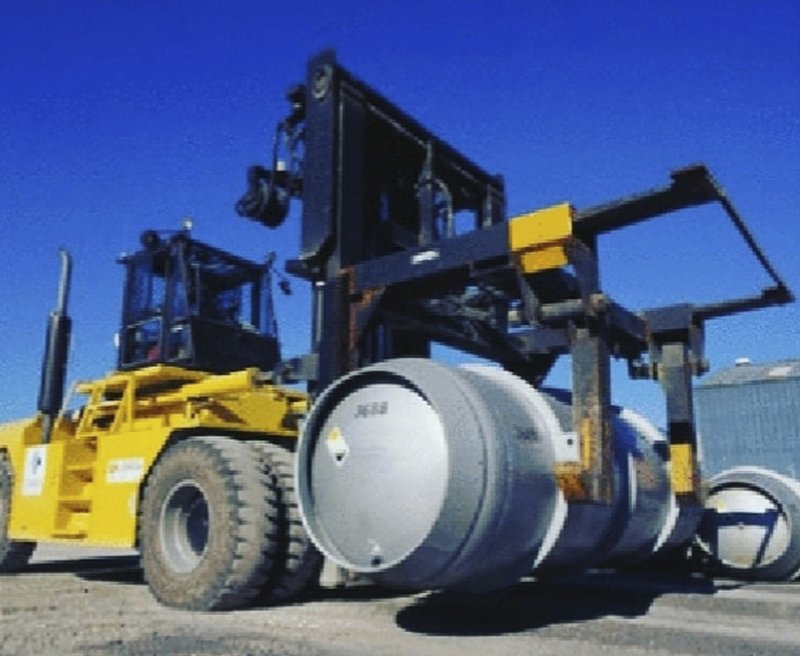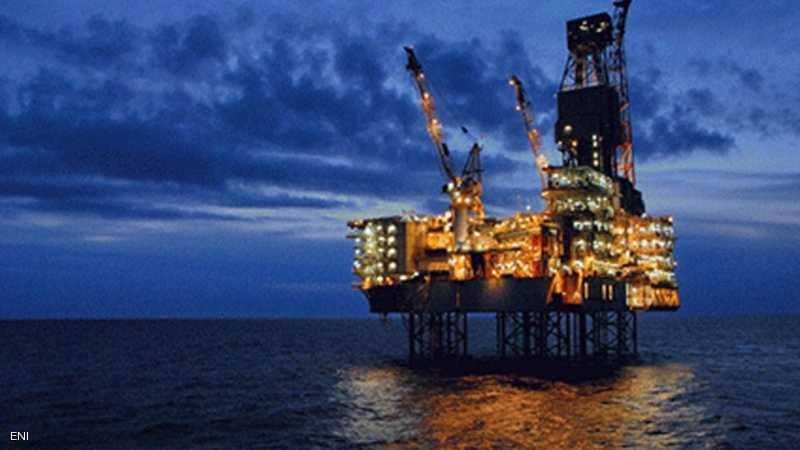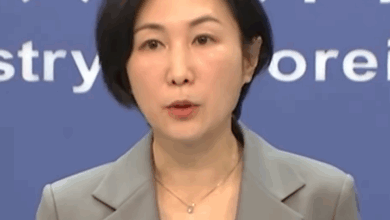
DUBAI, United Arab Emirates (AP) — Iran on Monday began enriching uranium up to 20 percent at an underground facility and seized a South Korean-flagged oil tanker in the crucial Strait of Hormuz, further escalating tensions in the Middle East between Tehran and the West.
The announcement of enrichment at Fordo came as fears arose that Tehran had seized MT Hankuk Chemi. Iran later acknowledged the seizure, alleging “oil pollution” sparked the move. However, hours earlier, Tehran had said a South Korean diplomat was due to travel there to negotiate over billions of dollars in its assets now frozen in Seoul.
The dual incidents come amid heightened tensions between Iran and the United States in the waning days of President Donald Trump’s term in office, which saw the US leader unilaterally withdraw from Tehran’s nuclear deal with world powers and set off months of escalating incidents between the two countries.
Iranian state television quoted spokesman Ali Rabiei as saying that President Hassan Rouhani had given the order for the move at the Fordo facility.
Iran’s decision to begin enriching to 20 percent a decade ago nearly brought an Israeli strike targeting its nuclear facilities, tensions that only abated with the 2015 atomic deal. A resumption of 20 percent enrichment could see that brinksmanship return as that level of purity is only a technical step away from weapons-grade levels of 90 percent.
From Israel, which has its own undeclared nuclear weapons program, Prime Minister Benjamin Netanyahu criticized Iran’s enrichment decision, saying it “cannot be explained in any way other than the continuation of realizing its goal to develop a military nuclear program.”
“Israel will not allow Iran to create a nuclear weapon,” he added.
Tehran has long maintained its nuclear program is peaceful. The US State Department says that as late as last year, it “continued to assess that Iran is not currently engaged in key activities associated with the design and development of a nuclear weapon.”
Trump withdrew the US unilaterally from Iran’s nuclear deal with world powers in 2018. In the time since, there have been a series of escalating incidents between the two countries.
Iran’s decision comes after its parliament passed a bill, later approved by a constitutional watchdog, aimed at hiking enrichment to pressure Europe into providing sanctions relief. It also serves as pressure ahead of the inauguration of President-elect Joe Biden, who has said he is willing to re-enter the nuclear deal.
Iran informed the International Atomic Energy Agency last week that it planned to take the step. The IAEA said Monday that “agency inspectors have been monitoring activities” at Fordo and that its director-general Rafael Mariano Grossi planned to issue a report to member-nations of the UN organization later in the day.
Meanwhile, satellite data from MarineTraffic.com showed the MT Hankuk Chemi off Bandar Abbas on Monday afternoon, with no explanation as to the change in the vessel’s path. It had been traveling from Jubail, Saudi Arabia, to Fujairah in the United Arab Emirates. The ship had been carrying an unknown chemical shipment, according to data-analysis firm Refinitiv.
Calls to South Korea’s Foreign Ministry and the ship’s listed owner, DM Shipping Co. Ltd. of Busan, South Korea, were not immediately answered after business hours Monday. Iran did not acknowledge the vessel’s location.
The United Kingdom Marine Trade Operations, an information exchange overseen by the British royal navy in the region, acknowledged an “interaction” between a merchant vessel and Iranian authorities in the Strait of Hormuz, the narrow mouth of the Persian Gulf through which 20 percent of all the world’s oil passes.
As a result, the UKMTO said the merchant vessel made an “alteration of course” north into Iran’s territorial waters.
Cmdr. Rebecca Rebarich, a spokeswoman for the US Navy’s 5th Fleet, said authorities there were aware and monitoring the situation.
Ambrey, a British security firm, reported the incident as an apparent seizure. Dryad Global, another maritime security firm, said the ship’s crew was 23 sailors from Indonesia and Myanmar.
Iran’s announcement coincides with the anniversary of the US drone strike killing Revolutionary Guard Gen. Qassem Soleimani in Baghdad last year. That attack later saw Iran retaliate by launching a ballistic missile strike, injuring dozens of US troops in Iraq. Tehran also accidentally shot down a Ukrainian passenger jet that night, killing all 176 people on board.
As the anniversary approached, the US has sent B-52 bombers flying over the region and sent a nuclear-powered submarine into the Persian Gulf.
On Thursday, sailors discovered a limpet mine on a tanker in the Persian Gulf off Iraq near the Iranian border as it prepared to transfer fuel to another tanker owned by a company traded on the New York Stock Exchange. No one has claimed responsibility for the mining, though it comes after a series of similar attacks in 2019 near the Strait of Hormuz that the US Navy blamed on Iran. Tehran denied being involved.
In November, an Iranian scientist who founded the country’s military nuclear program two decades earlier was killed in an attack Tehran blames on Israel.
___




